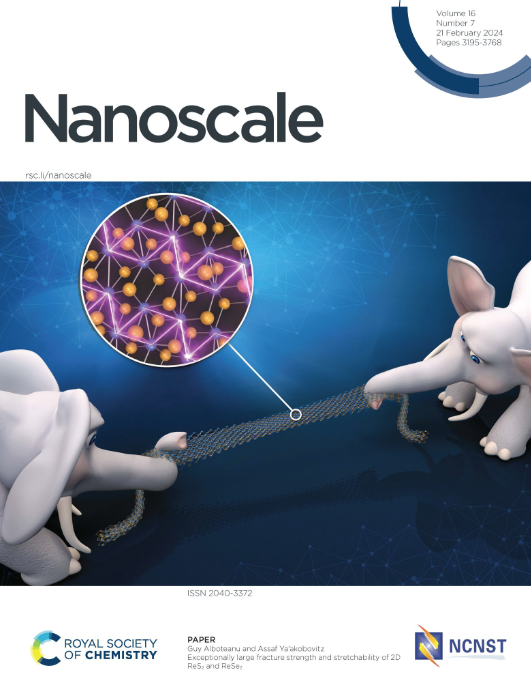ZnO Quantum Dots as an Electron-Transport Layer for Highly Efficient and Stable Organic Solar Cells
IF 5.8
3区 材料科学
Q1 CHEMISTRY, MULTIDISCIPLINARY
引用次数: 0
Abstract
An advanced protocol for the mild synthesis of stable and concentrated ZnO quantum dots (QDs) yields colloidal inks suitable for applications in electron-transport layers (ETLs) of organic solar cells, delivering superior power conversion efficiency (PCE) and photodegradation stability as compared to bulk-like commercially available ZnO inks. The champion ZnO QDs-based devices with a quaternary PM6:L8BO:BTP-eC9:PC70BM absorber exhibit a PCE of 18.86%, surpassing similar cells with bulk-like ZnO ETL (18.15%). The ZnO QDs exhibited size-dependent electron-transport efficiency, with the highest performance achieved for QDs of 4.4-4.5 nm, decreasing for larger QDs down to the level of the bulk-like ZnO reference. A correlation between the photoluminescence and electron-transport efficiencies of ZnO quantum dots (QDs) was observed and interpreted in terms of an interplay between the defect state density and exciton confinement in size-selected ZnO QDs.ZnO量子点作为高效稳定有机太阳能电池的电子传输层
一种用于温和合成稳定和浓缩ZnO量子点(QDs)的先进方案产生适用于有机太阳能电池电子传输层(ETLs)的胶体油墨,与大块状商用ZnO油墨相比,具有优越的功率转换效率(PCE)和光降解稳定性。采用四元PM6:L8BO:BTP-eC9:PC70BM吸收剂的ZnO qds器件的PCE为18.86%,超过了采用体积状ZnO ETL的同类电池(18.15%)。ZnO量子点表现出与尺寸相关的电子传输效率,在4.4-4.5 nm的量子点上达到了最高的性能,而在更大的量子点上,电子传输效率下降到类似体状ZnO基准的水平。研究了ZnO量子点(QDs)的光致发光和电子输运效率之间的关系,并根据缺陷态密度和激子约束之间的相互作用进行了解释。
本文章由计算机程序翻译,如有差异,请以英文原文为准。
求助全文
约1分钟内获得全文
求助全文
来源期刊

Nanoscale
CHEMISTRY, MULTIDISCIPLINARY-NANOSCIENCE & NANOTECHNOLOGY
CiteScore
12.10
自引率
3.00%
发文量
1628
审稿时长
1.6 months
期刊介绍:
Nanoscale is a high-impact international journal, publishing high-quality research across nanoscience and nanotechnology. Nanoscale publishes a full mix of research articles on experimental and theoretical work, including reviews, communications, and full papers.Highly interdisciplinary, this journal appeals to scientists, researchers and professionals interested in nanoscience and nanotechnology, quantum materials and quantum technology, including the areas of physics, chemistry, biology, medicine, materials, energy/environment, information technology, detection science, healthcare and drug discovery, and electronics.
 求助内容:
求助内容: 应助结果提醒方式:
应助结果提醒方式:


